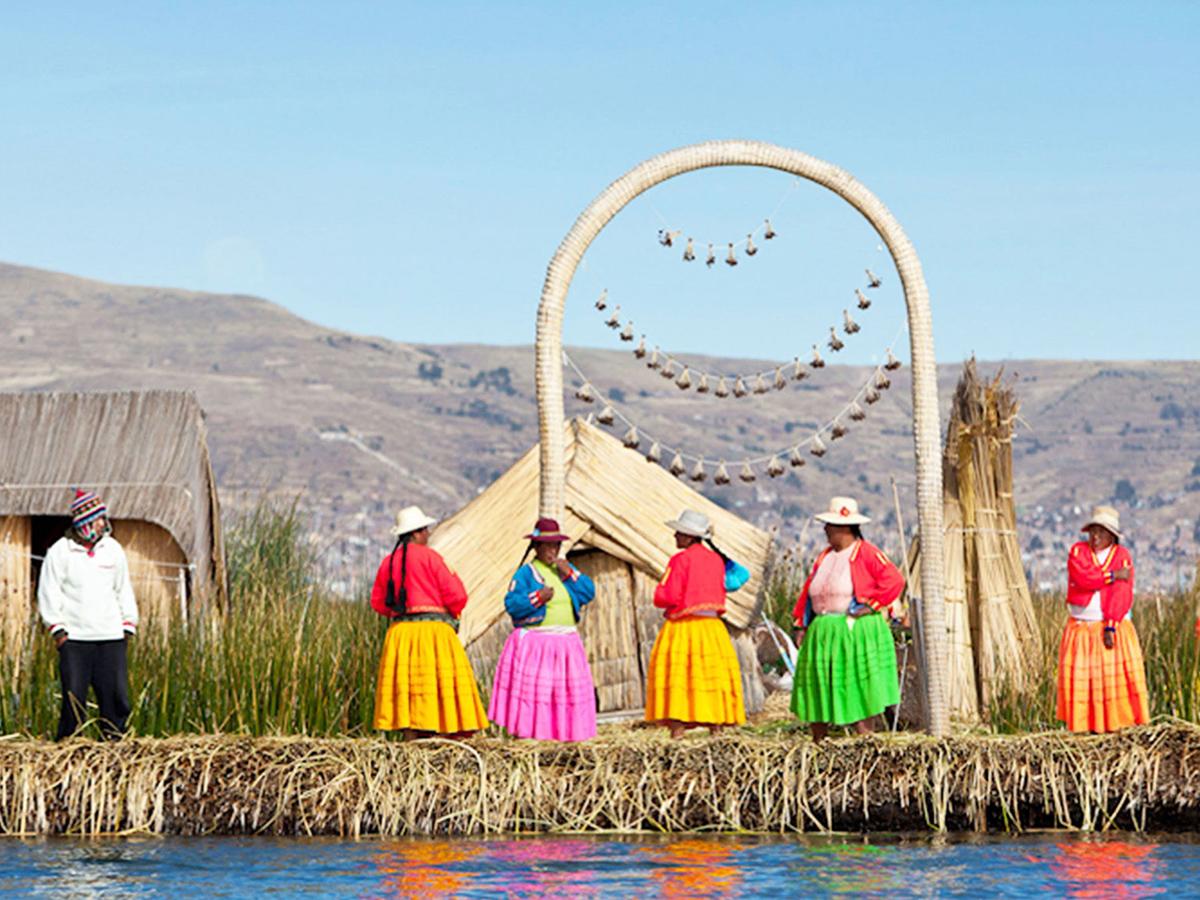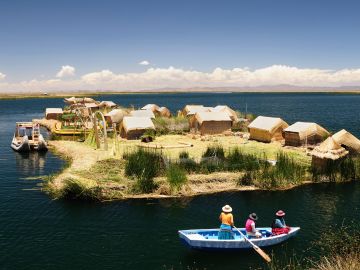Lake Titicaca: Unveiling the Highest Navigable Lake

Introduction to Lake Titicaca, Peru
Overview of Lake Titicaca's location and significance
In Lake Titicaca, you will find the largest lake in South America by volume and the highest navigable lake in the world. The lake is situated on the border of Peru and Bolivia, with most of its water and shoreline belonging to Peru. Lake Titicaca holds great cultural significance as the Andean people consider it a sacred place, particularly the Incas. You can explore various islands on the lake, such as the famous Uros floating islands and Taquile Island, each offering unique insights into the local traditions and way of life.
Climate and environment around Lake Titicaca
Due to its high elevation of over 3,800 meters above sea level, Lake Titicaca experiences a cool and temperate climate. The region has distinct wet and dry seasons, with most rainfall occurring from December to March. The lake is home to diverse flora and fauna, including unique species of birds like the Andean condor and different varieties of aquatic life. The surrounding landscapes are characterized by Andean mountains, providing a stunning backdrop to the serene waters of Lake Titicaca.
You now have a brief understanding of Lake Titicaca in Peru, its cultural significance, and the natural beauty that awaits you in this enchanting region.

History of Lake Titicaca
Ancient civilizations and cultures around Lake Titicaca
In Lake Titicaca, you can delve into the rich history of ancient civilizations that once thrived in the region. The area around the lake has been inhabited for thousands of years, with evidence of settlements dating back to pre-Inca times. The Tiwanaku culture, known for its advanced agricultural practices and impressive stone architecture, is one of the prominent civilizations that flourished near the lake. You can still see remnants of their temples and artefacts on the islands and shores of Lake Titicaca.
Colonial influence and modern-day significance
During the colonial period, Lake Titicaca was a strategic location for the Spanish conquest of the Inca Empire. The Spanish influence is evident in the architecture and religious practices of the local communities around the lake.
Today, Lake Titicaca continues to be a vital cultural and economic hub for the surrounding region, attracting tourists from around the world. The traditions and customs of the indigenous people living near the lake have persisted through the centuries, adding to the unique charm of this historical area.

Geography and Geology of Lake Titicaca
Formation and dimensions of Lake Titicaca
Lake Titicaca, located in the Andes Mountains of South America, is one of the highest navigable lakes in the world. It was formed by tectonic activity and glacial melting during the last Ice Age. The lake spans an area of approximately 8,372 square kilometres, with a maximum length of about 190 kilometres and a width of around 80 kilometres. Its maximum depth reaches up to 281 meters.
Flora and fauna in the Lake Titicaca region
The region around Lake Titicaca is known for its unique biodiversity, with several endemic species of plants and animals. The lake is home to species like the giant frog, Andean coot, and several species of fish found nowhere else in the world. The surrounding wetlands and plains support a variety of crops and agricultural activities, contributing to the livelihoods of the local communities.

Tourist Attractions around Lake Titicaca
Visit to Uros Floating Islands and Taquile Island
In Lake Titicaca, a visit to the Uros Floating Islands offers a unique experience of witnessing the traditional way of life of the Uros people, who constructed these islands from totora reeds. You can take a boat ride to these artificial islands and interact with the locals to learn about their customs and daily routines.
Taquile Island, known for its textile artistry and terraced fields, is another must-visit destination on the lake. The island offers breathtaking views of the surrounding landscapes and a glimpse into the vibrant culture of the residents.
Exploring Copacabana and Puno on the shores of Lake Titicaca
The towns of Copacabana in Bolivia and Puno in Peru serve as gateways to the wonders of Lake Titicaca. In Copacabana, you can explore the stunning Moorish-influenced Basilica of Our Lady of Copacabana and participate in traditional festivals honouring the Virgin of Candelaria. Puno, on the other hand, is known for its lively markets, where you can shop for local handicrafts and taste authentic Andean cuisine. Both towns offer a glimpse into the local way of life and provide a perfect base for further exploration of the lake and its surroundings.

Cultural Heritage of Lake Titicaca
Traditional customs and rituals of the local communities
When visiting the Uros Floating Islands and Taquile Island, you will have the opportunity to immerse yourself in the traditional customs and rituals of the local communities. Witness firsthand how the Uros people have preserved their way of life through generations, relying on the totora reeds of Lake Titicaca for their livelihood. On Taquile Island, observe the intricate textile artistry that has been passed down from ancestors, showcasing the rich cultural heritage of the residents.
Impact of tourism on the cultural identity of Lake Titicaca
Exploring Copacabana and Puno on the shores of Lake Titicaca provides insight into the impact of tourism on the region's cultural identity. While the influx of tourists has brought economic opportunities to local communities, it also poses challenges in preserving the authenticity of traditions. The towns strive to balance the benefits of tourism with the need to safeguard their cultural heritage, offering visitors a glimpse into a way of life that is both resilient and evolving in the face of modern influences.

Ecological Importance of Lake Titicaca
Conservation efforts and challenges facing Lake Titicaca
Exploring the ecological importance of Lake Titicaca sheds light on the conservation efforts and challenges faced by the region. The lake, known for its unique aquatic species and diverse ecosystems, is a crucial ecological hub. However, increasing pollution and habitat degradation threaten its delicate balance. Local organizations and authorities are working tirelessly to implement conservation initiatives, safeguarding the biodiversity and natural beauty of Lake Titicaca for future generations.
Biodiversity hotspots and conservation projects in the region
When delving into the biodiversity hotspots of Lake Titicaca, one can marvel at the wealth of endemic species that call this region home. From the iconic Titicaca water frog to the rare Andean cat, the lake supports a rich tapestry of life. Conservation projects focusing on protecting these species and their habitats are paramount to maintaining the ecological equilibrium of the area. Through collaborative efforts and sustainable practices, conservationists strive to ensure the longevity of these unique ecosystems.

Adventure Activities at Lake Titicaca
Kayaking and paddleboarding on Lake Titicaca
Exploring the waters of Lake Titicaca provides a unique perspective on the region's natural beauty. Kayaking and paddleboarding allow you to glide across the crystal-clear waters, immersing yourself in the stunning landscapes and serene atmosphere.
As you paddle along, you may encounter native bird species and perhaps catch a glimpse of the majestic Andean mountains in the distance. These activities offer a peaceful way to appreciate the ecological richness of Lake Titicaca while engaging in a rewarding adventure.
Hiking and mountain biking around the Lake Titicaca region
Embark on an adventurous journey through the diverse landscapes surrounding Lake Titicaca with hiking and mountain biking excursions. Hiking trails lead you through rugged terrain, past ancient ruins and quaint villages, providing a glimpse into the region's cultural heritage. Mountain biking offers a thrilling way to explore the area's natural wonders, with trails meandering through valleys and along the lakeshore. These activities not only offer a physical challenge but also allow you to connect with the unique ecosystems and local communities of Lake Titicaca.

Conclusion and Travel Tips for Lake Titicaca
Best time to visit Lake Titicaca and travel recommendations
The best time to visit Lake Titicaca is during the dry season from May to October, when the weather is mild and conducive to outdoor activities. Remember to pack warm clothing for chilly evenings and early mornings.
Safety tips and cultural etiquette when visiting Lake Titicaca
Respect the local culture and customs when visiting Lake Titicaca. Always follow safety guidelines for adventure activities and be mindful of the environment to help preserve the beauty of this unique region.
